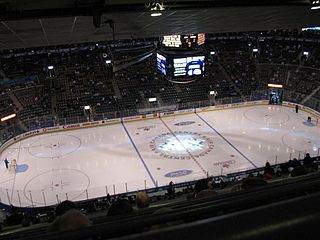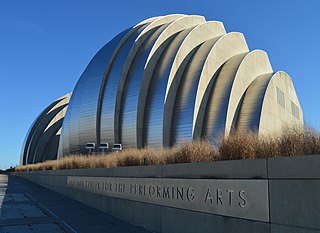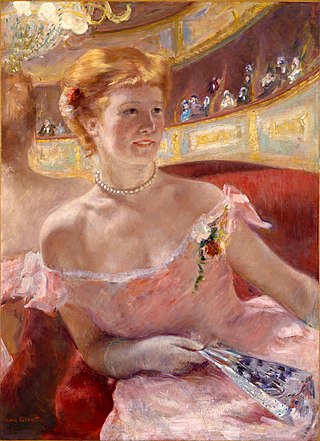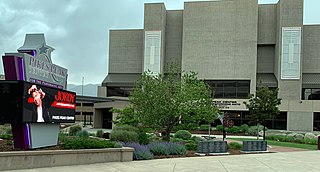
The following outline is provided as an overview of and topical guide to theatre:

A movie theater, cinema, or cinema hall, also known as the big screen, the silver screen, movie house, the movies, picture house, the pictures, picture theater, or simply theater is a business that contains auditoria for viewing films for public entertainment. Most are commercial operations catering to the general public, who attend by purchasing tickets.

An auditorium is a room built to enable an audience to hear and watch performances. For movie theatres, the number of auditoria is expressed as the number of screens. Auditoria can be found in entertainment venues, community halls, and theaters, and may be used for rehearsal, presentation, performing arts productions, or as a learning space.

A theater, theatre, or playhouse, is a structure where theatrical works, performing arts, and musical concerts are presented. The theater building serves to define the performance and audience spaces. The facility usually is organized to provide support areas for performers, the technical crew and the audience members, as well as the stage where the performance takes place.

Stadium seating or theater seating is a characteristic seating arrangement that is most commonly associated with performing-arts venues, and derives its name from stadiums, which typically use this arrangement.

The luxury box and club seating constitute the most expensive class of seating in arenas and stadiums, and generate much higher revenues than regular seating. Club ticketholders often receive exclusive access to an indoor part of the venue through private club entrances, to areas containing special restaurants, bars, merchandise stands, and lounge areas of the venue that are not otherwise available to regular ticketholders.

Seating capacity is the number of people who can be seated in a specific space, in terms of both the physical space available, and limitations set by law. Seating capacity can be used in the description of anything ranging from an automobile that seats two to a stadium that seats hundreds of thousands of people. The largest sporting venue in the world, the Indianapolis Motor Speedway, has a permanent seating capacity for more than 235,000 people and infield seating that raises capacity to an approximate 400,000.

A music venue is any location used for a concert or musical performance. Music venues range in size and location, from a small coffeehouse for folk music shows, an outdoor bandshell or bandstand or a concert hall to an indoor sports stadium. Typically, different types of venues host different genres of music. Opera houses, bandshells, and concert halls host classical music performances, whereas public houses ("pubs"), nightclubs, and discothèques offer music in contemporary genres, such as rock, dance, country, and pop.

In live entertainment, there are several possible schemes for the seating assignment of spectators—including completely unassigned seating. There are several schemes which are most commonly used, though there are no hard and fast rules and alternate or modified schemes are sometimes used as is suitable to the event.

The Theatre Royal, was an opera house and performance venue in Wexford Ireland which opened in 1832 and closed in 2005. It was the home of the annual Wexford Festival Opera, and has now been replaced by The National Opera House.

The Kauffman Center for the Performing Arts is a performing arts center in downtown Kansas City, Missouri, USA, at 16th and Broadway, near the Power & Light District, the T-Mobile Center and the Crossroads Arts District. Its construction was a major part of the ongoing redevelopment of downtown Kansas City.

The control booth, control room, lighting box, technical booth, tech booth, or just booth used by television, film or theatrical technicians is the area designated for the operation of technical equipment, lighting controls and sound board. Often one or two followspots may be located in the booth as well. In a theater, it is generally an enclosed space with a large sliding window with a good view of the stage centered in the back of the house. It may be on the ground floor or at the balcony level. In a film or television production, it might be in a trailer or other space near the studio.

Moore Theatre is an 1,800-seat performing arts venue in Seattle, Washington, United States, located two blocks away from Pike Place Market at the corner of 2nd Avenue and Virginia Street. It opened in 1907 and is Seattle's oldest active theater, hosting a variety of theatrical productions, concerts and lectures. The Moore is currently operated by the Seattle Theatre Group, which also runs the 2,803-seat Paramount Theatre and the Neptune Theatre.

Canberra Theatre Centre (CTC), also known as the Canberra Theatre, is the Australian Capital Territory’s central performing arts venue and Australia's first performing arts centre, the first Australian Government initiated performing arts centre to be completed. It opened on 24 June 1965 with a gala performance by the Australian Ballet.
There are different types of theatres, but they all have three major parts in common. Theatres are divided into two main sections, the house and the stage; there is also a backstage area in many theatres. The house is the seating area for guests watching a performance and the stage is where the actual performance is given. The backstage area is usually restricted to people who are producing or in the performance.

Bridlington Spa is a dance hall, theatre and conference centre in Bridlington, East Riding of Yorkshire, England. Refurbished between 2006 and 2008 and further updated with a new branding in 2016, the venue boasts a large Art Deco ball room, Edwardian theatre, art gallery and a selection of other meeting and event spaces; all featuring outstanding views over Bridlington's South Bay.

The Julie Rogers Theatre is a historic performing arts theatre located on Pearl Street in downtown Beaumont, Texas. Built in 1928, the theatre was once Beaumont's City Hall and Auditorium. The capacity is approximately 1,663 seats.

The State Theatre is a Moderne style cinema in Red Bluff, California, USA. It was built in 1945-46 to a design by architects Alexander A. and Mackenzie A. Cantin, replacing a theater that had burned two years before. It provided the only public stage in Tehama County until 1991, and was the only cinema until 1993. It is notable as one of the few theaters to be built in the United States during World War II.

Woman with a Pearl Necklace in a Loge is an 1879 painting by American artist Mary Cassatt. The Philadelphia Museum of Art acquired the painting in 1978 from the bequest of Charlotte Dorrance Wright. The style in which it was painted and the depiction of shifting light and color was influenced by Impressionism. This painting shows a view of the modern woman and is similar in style to Degas.




















